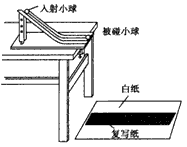More than any other industry, the luxury-goods business needs people to feel good about spending money. So at a recent conference in Moscow, Bernard Arnault, the head of Moet Hennessy Louis Vuitton (LVMH), the world’s biggest luxury-goods group, went to great lengths to dismiss investors’ fears about the impact on the industry of America’s credit crisis, a possible recession and the weak dollar. Indeed, Mr. Arnault said he expects the industry’s sales almost to double in the next five years, thanks to p demand from emerging markets and the creation of new wealth across the globe.
After a depressing period at the beginning of the decade when the terrorist attacks in America, the outbreak of SARS and the war in Iraq reduced international travel and people’s appetite for frivolous things, the industry has had three excellent years. According to Bain, a consultancy, sales of luxury goods grew by 9% in 2006 to 159 billion ($ 200 billion) and will reach about 170 billion this year, which would double the 1996 figure. Europe remains the biggest market, with about 40% of sales, though the pest growth is in China, Russia, the Middle East and some Latin American countries.
Can the industry really double again in half the time Analysts at Citigroup say that Christmas will be good this year for luxury-goods firms, but they are more cautious about next year because of worries about falling demand in America. It is tempting to think that luxury goods are isolated from the broader economy, because customers are rich enough to ignore it, says Luca Solca, a luxury-goods analyst. But the industry’s expansion into a broader "aspirational" market, by selling to the merely affluent, makes it susceptible.
And as luxury firms expand in Asia and the Americas, they will continue to suffer currency woes. Most of the industry’s production is in the euro-zone, mainly in France and Italy. Even the optimistic Mr. Arnault complained at his firm’s recent annual meeting that the euro had reached "incomprehensible" levels against the dollar and the yen. Luxury companies could shift more of their production to countries with weaker currencies and cheap labor (ie, China), but some customers-especially Asian customers-want the elitism and craftsmanship associated with products manufactured in Europe.
At least sales in emerging markets are growing fast. But Melanie Flouquet, a luxury analyst at JPMorgan, an investment bank, says that this growth is not enough to offset a slowdown in America. Chinese and Russian consumers account for around 7% and 4% of global luxury sales respectively, compared with 16-18% for Americans. Even so, European firms are sticking to their plans in New York, America’s fashion capital. Gucci will open its biggest shop in February in Trump Tower, a shiny skyscraper on New York’s Fifth Avenue. Ermenegildo Zegna will also open a shop on Fifth Avenue next year. And this week Dolce & Gabbana re-opened its spruced-up shop on Madison Avenue.
Claudia D’ Arpizio of Bain thinks luxury makers need to follow Giorgio Armani and segment their customers more carefully with different product lines at different price ranges. She predicts that the industry will see solid growth rates of up to 10% a year in the near term. This means that the industry could double in ten years-by which time China is likely to account for more than a quarter and maybe as much as a third of the world’s consumption of luxury goods. Yet Mr. Arnault’s rosy prediction seems unlikely to come true. As Americans tighten their purse-strings, over-optimism is a luxury even this industry cannot afford.
According to the text, what is the traditional view towards the relationship between luxury industry and broader economy()
A. The better the economy is, the more profit the luxury industry can get
B. The worse the economy is, the more profit the luxury industry can get
C. Its sales volume depends not that much on the broader economy
D. Its sales volume mainly depends on tourists, so tourism is a good influence factor on it


